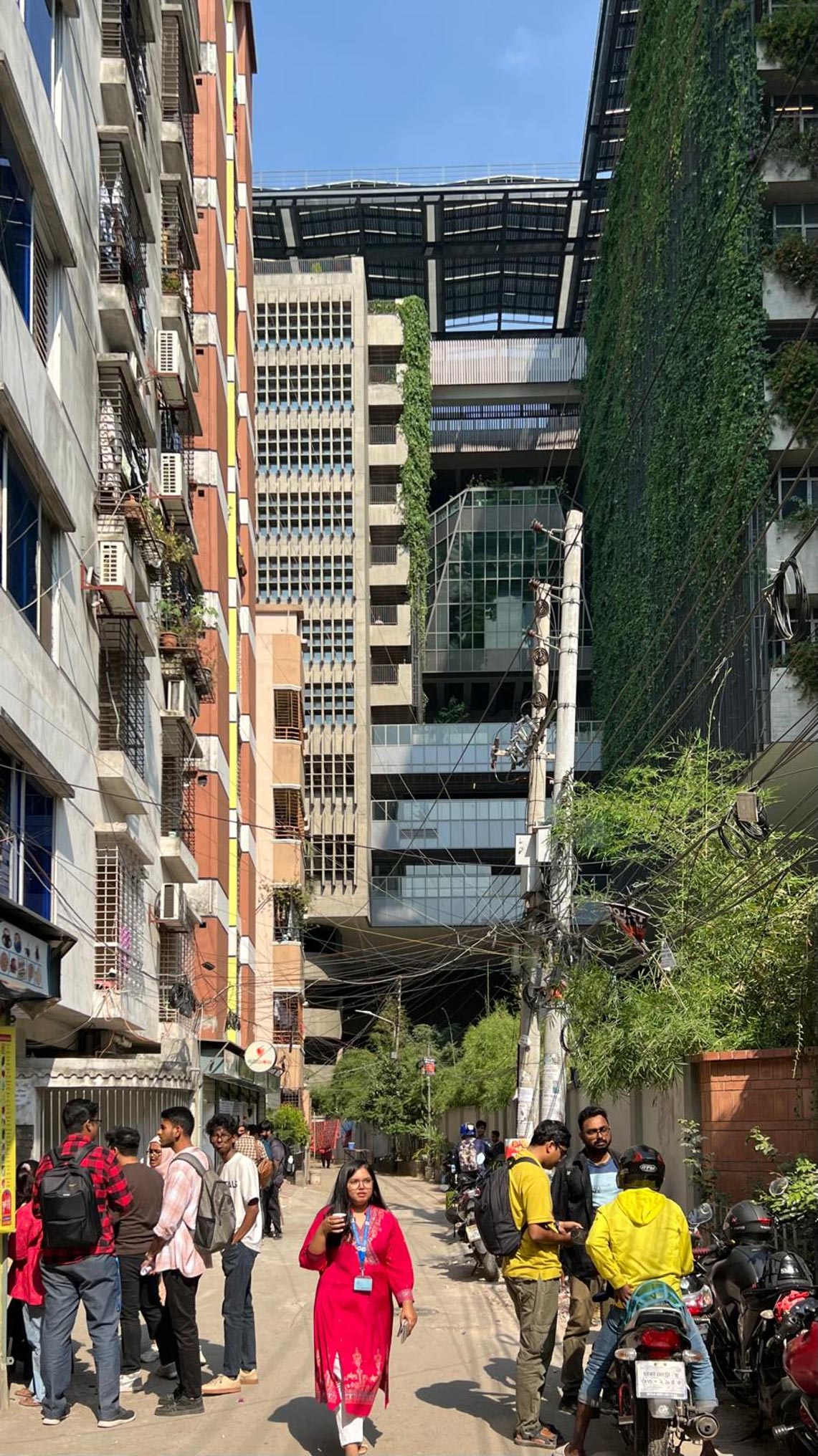BRAC University Campus, Dhaka, Bangladesh


This project achieves the impossible: it adds both built and open space to the city. The site is a polluted swampland within Dhaka. Working with the client, an NGO-run university by BRAC (Building Resources Across Communities), the project team proposes a building that floats above the pond. First, the water itself is remediated into a bio-retention pond. The whole ground level of the project is opened to the public. Above, sustainable thinking permeates the design of the university building. Brise-soleil and planted facades optimize the interior climate, reducing cooling demand by 40%.
The building is designed with plenty of open breezeways creating about 40 % of the area as natural ventilated semi enclosed informal interaction spaces. Only where needed, decentral mechanical systems are located floor by floor and central mech rooms and shafts are reduced to a minimum. Water recycling and rainwater collection reduces water use by nearly 50%. Photovoltaic panels and beekeeping transform the roof into a productive environment. The new university building hosts about 17,000 people in one single building of about 100,000 m² on 11 floors.
Transsolar has developed a tropical model for sustainable design and implemented an innovative climate concept based on adaptive comfort and hybrid ventilation: excellent indoor air quality with good thermal comfort. The project deliberately avoids a conventional building typology; there are no closed glass facades wrapping around the building, creating a porosity that allows for excellent natural cross-ventilation through the breezeways. Conventional mechanical ventilation and cooling are largely avoided and are only necessary for the auditorium, the theater, the department offices, the health station, and about 10 IT rooms, which together account for only about 15% of the space.
The remaining major part of the enclosed areas, including over 220 classrooms, are operated with hybrid ventilation, “mixed mode ventilation” and equipped with so-called Hybrid Cooling systems. Air movement through fans makes the rooms comfortable even at higher temperatures and humidity levels. The tempered fresh air is cooled and dehumidified, but not to unnecessarily cold supply air temperatures and very low humidity; the CO2 content of the air in the building is low with minimal investment costs.
The total electrical energy demand is reduced by about 40% compared to conventional design. About 25% thereof is covered by photovoltaics harvested on the overarching roof.















